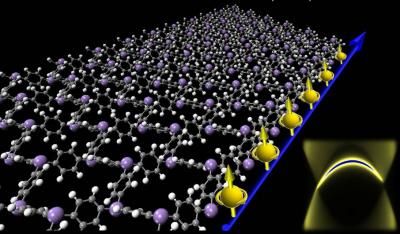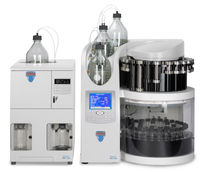Engineers develop method to disperse chemically modified graphene in organic solvents
A method for creating dispersed and chemically modified graphene sheets in a wide variety of organic solvents has been developed by a University of Texas at Austin engineering team led by Professor Rod Ruoff, opening the door to use graphene in a host of important materials and applications such as conductive films, polymer composites, ultracapacitors, batteries, paints, inks and plastic electronics.
Graphene is a unique atom-thick, carbon-based material.Its unusual combination of very high mechanical stiffness and strength, high and tunable electrical and thermal conductivity, and the fact that chemists can alter its chemistry readily means it has applications in nanoelectronics, solar cell devices and energy storage devices such as batteries and ultracapacitors.
Of critical importance to many of these possible applications is the dispersion of graphene or chemically modified graphene in solvents that can, for example, coat products to make them stronger, stiffer and improve thermal and electrical conductivity.
"A part of our research group has avidly pursued developing an understanding of how to readily make colloidal dispersions of graphene in a wide variety of solvents from water to various organic liquids," said Ruoff, professor of mechanical engineering who holds the Cockrell Family Regents Chair in Engineering #7. "The solvents and the chemical functionality of the graphene, and thus how the graphene disperses, has allowed us to develop important rules for the research and technology communities.
"By using 'solubility parameters' ubiquitously applied by industry to determine the solvents most likely to dissolve certain materials or to create good colloids, the researchers have developed a set of solubility parameters for chemically modified graphenes," Ruoff added. "We believe that this approach will have exceptional utility for technology transition in use of colloidal suspensions of graphene sheets."
The findings were detailed in the paper "Colloidal Suspensions of Highly Reduced Graphene Oxide in a Wide Variety of Organic Solvents" which will be published in the April issue of the journal Nano Letters. It was co-authored by Sungjin Park, Jinho An, Inhwa Jung, Richard D. Piner, Sung Jin An, Xuesong Li, Aruna Velamakanni and Ruoff, all of the Department of Mechanical Engineering at the university.
Park and Ruoff, who is one of the scientific community's foremost authorities in the study of graphene, have also written the article "Chemical Methods for the Production of Graphenes," which appeared in the March 29 issue of Nature Nanotechnology.
Other news from the department science
These products might interest you
Most read news
More news from our other portals
See the theme worlds for related content
Topic World Battery Technology
The topic world Battery Technology combines relevant knowledge in a unique way. Here you will find everything about suppliers and their products, webinars, white papers, catalogs and brochures.

Topic World Battery Technology
The topic world Battery Technology combines relevant knowledge in a unique way. Here you will find everything about suppliers and their products, webinars, white papers, catalogs and brochures.




























































